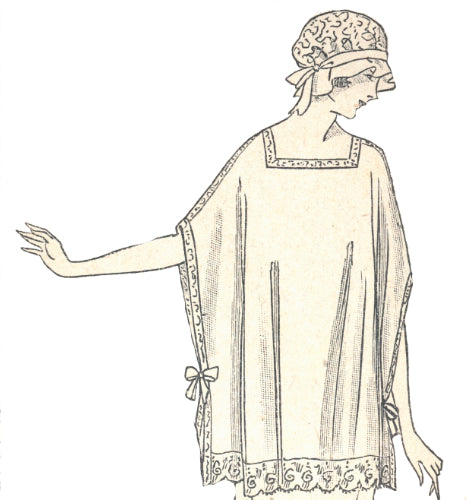
11 Jun 2021

From the Sartorial Gazette - June 1922
The Second Try-On
In the second baste-up, much less tacking should be necessary. I would advise the tacking of side-seams, outward as before.
The sleeves should be tacked in and the collar tacked on, the proper inside collar, this time, that it is intended to be sewn on, and the linings should be tacked in ready for felling over. The fronts, facings, shoulders and all other seams should be made up.
The second baste-up should then prove a fair test as to whether the garment is going to fit or not. It could be adopted in the first place (from the first fit) if the cutter can make pretty sure of his cut. Having the garment ready in this manner, proceed with the second fitting.
Proceed in exactly the same manner, or order as before. See that the coat is well on, and it should go on easier this time, more especially if the linings are silk, or some other easy slipping material. Next see to the sleeves, but they need not be ripped out this time, or, at least there should be no need. Then see to the balance, which it should be easy to adjust at side seam, if required.
Then attend to the shoulders and all the seams, marking with tailor chalk any changes or improvements that are needed. Cast your eye over the general appearance, and mark any parts for stretching or shrinking, etc. and your second try-on is complete.
This should comprise all the fittings necessary, but it may be that your customer is one that likes many fittings. Well, all you can do, in such cases, is to give perhaps two flash bastings and one or two forward fit-ons. A final fitting should be given when the garment is complete. The manner of proceeding should be the same, no matter whether there are one, two, three, or four fittings.
Hints On Various Garments
But I have, in the previous remarks, only touched upon the baste-up an try-on of ladies' coats. There remain other garments, such as ordinary skirts, riding habit skirts, riding trousers, breeches, etc.
For the baste-up of such garments, the less there is left to tacking the better. Skirts for walking are best seamed up and then tacked into a waist band, and the hem tacked up at the bottom. For riding skirts, no matter what the character, they should be seamed up and then tacked into waist and hem turned up. Riding trousers and breeches, in my opinion, should be always made right up, as the fit and comfort of these things so much depends on the smoothness of the seams, and the shrinking of the pieces.
For the fit-on of these garments it will, invariably, be found that a lady assistant to attend the customer in fitting and changing and through whom any delicate suggestion from the customer to cutter, or from cutter to customer, may be made. Having a lady assistant will be a great advantage to the building up of that branch of a ladies' trade.
There are a few women who much prefer the cutter to see to everything entirely himself, but they are very few and even in such cases, a lady assistant is "much better form".
In cases, where no such assistant is employed, just place the garments to be fitted on a chair, or table, and retire while your customer changes, requesting her to touch the bell when ready for you to fit.
0 comment